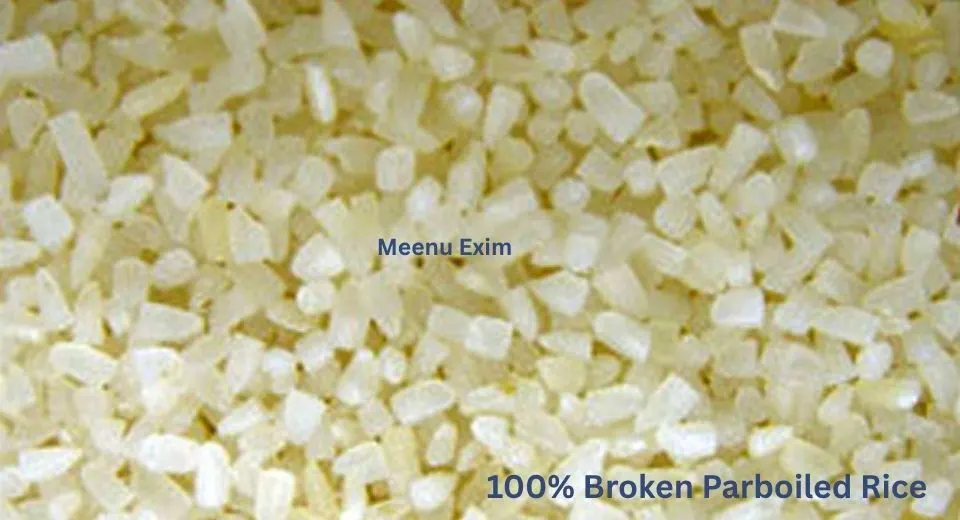
Table of Contents
Toggle100 % Broken Parboiled Rice

100% Broken Parboiled Rice refers to rice grains in which the parboiling process has been done before milling. They combine the characteristics of “broken rice” with the benefits of “parboiled rice.”
Key Characteristics :
- Fragmented Grains: The grains are not whole and are significantly shorter than whole grain rice. The grain size generally ranges from 1mm to 3mm.
- Golden/Yellowish Hue: Due to the parboiling process, the rice takes on a characteristic yellowish or light golden color,
- Firmer Texture: Even in broken form parboiled rice tends to be firmer and less sticky when cooked in comparison to raw white rice.
- Enhanced Nutritional Value: The parboiling process helps retain more of the naturally occurring vitamins and minerals. This is due to the fact that nutrients from the outer layers are transferred into the inner kernel. These nutrients would otherwise be lost during the regular milling of raw rice.
- Faster Cooking: The smaller size of broken rice allows it to in comparatively less time.
- Increased Shelf Life: Parboiling helps inactivate enzymes that cause rancidity. This extends the shelf life of the rice.
- Less Sticky: The parboiling process makes the cooked rice less sticky, even when reheated.
- High Starch Content: It is a good source of carbohydrates similar to other rice
- Gluten-Free: Like all rice, it is naturally gluten-free.
Uses & Applications :
100% Broken Parboiled Rice can be used in various ways, mainly due to its cost-effectiveness, quick cooking, and specific textural properties.
- Human Consumption:
- Economical Staple: It is an economically viable option and a staple food in many regions, especially in developing countries.
- Porridges and Congees: It can soften quickly and create a creamy, thick consistency. This makes it ideal for rice porridges (congee, kanji) and various Indian sweets like kheer and payasam.
- Batter Preparations: It can also be used in making batters for dishes like idli, dosa etc. where its texture contributes to the desired fermentation and final product.
- Rice Flour: It can be used for making rice flour due to its broken nature.
- Animal Feed:
- Extensively used as a feed for livestock, poultry (chicken, ducks), and aquaculture (fish feed).
- Also used in pet food formulations.
- Industrial Applications:
- Brewing Industry: It is often referred to as “brewers’ rice as it is used as an adjunct in beer production.
- Starch Production: Its high starch content makes it valuable for industrial starch extraction, which can be used in various industries like food processing, textiles, and paper.
- Chemical Production: Can be utilized in the production of certain chemicals.
- Human Consumption:
Benefits Compared to Raw Broken Rice :
- Higher Nutritional Content: Retains more micronutrients (B vitamins, fiber, protein) in comparison to raw broken rice. This is due to the parboiling process
- Better Texture: Tends to be firmer and less sticky after cooking.
- Improved Digestibility: The parboiling process can make the starch more resistant to digestion. This can be beneficial for blood sugar management